Larger cichlid species from the African lakes Malawi and Tanganijka are very popular aquarium fish. Most species from the lakes of the East African Rift Valley are algivores and exist mainly on a vegetable diet. If you want to rig up your cichlid tank with aquatic plants, you’re facing a problem, because the cichlids don’t just eat algae but also higher plants. Nevertheless, there are a couple of plant species that haven proven themselves as being “cichlid-proof”. We have some recommendations for you.
Anubias
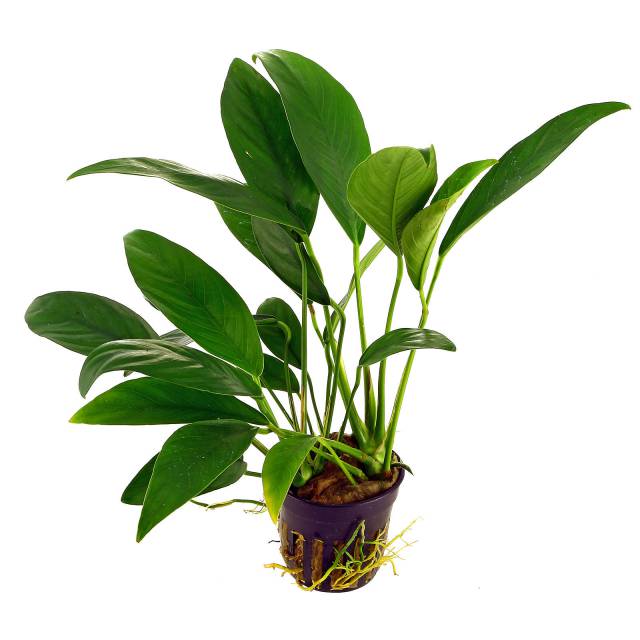
Its spear-shaped leaves are very hard and thus very resistant against hungry fish. Furthermore, Anubias are quite undemanding in terms of nutrition and other aquatic parameters. As so-called epiphytes, Anubias can be cultivated on decorations such as driftwood or stones and they’ll attach to them with their holdfast roots. You can find a how-to here. When fixed to the aquarium decoration, the plants stay well in place. This is important, especially with cichlids, which will disturb the substrate and displace lighter objects in the tank when foraging or nesting. Anubias are available in many different variants and species, which differ in size, leaf-shape and color.
Java fern
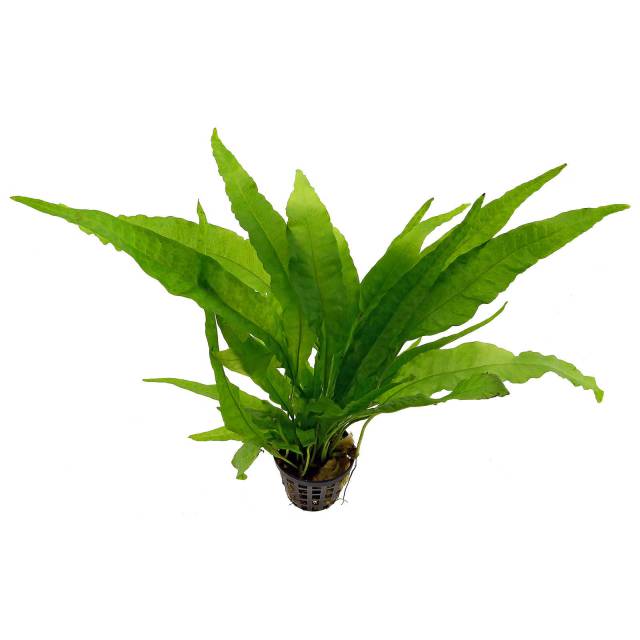
Microsorum pteropus is also an option for use in a cichlid tank. Just like Anubias, Java fern is an epiphyte and clings onto stones oder driftwood with its holdfasts. The relatively hard-leaved plant is robust and easy to care for. Young plants and shoot tips are a little softer and more likely to get eaten, though.
Crinum
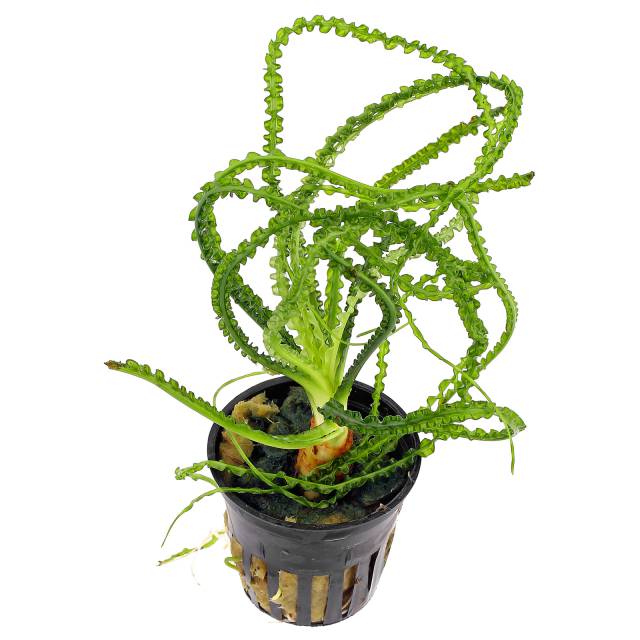
Crinum species, like e. g. the popular Crinum calamistratum, can also be classified as cichlid-proof. This bulbous plant from Africa is very robust and has hard, wavy leaves. Crinum calamistratum needs a little more light than other Crinum types to grow properly. There are some things to consider when planting Crinum into the substrate: You'll find instructions right here.
Vallisneria
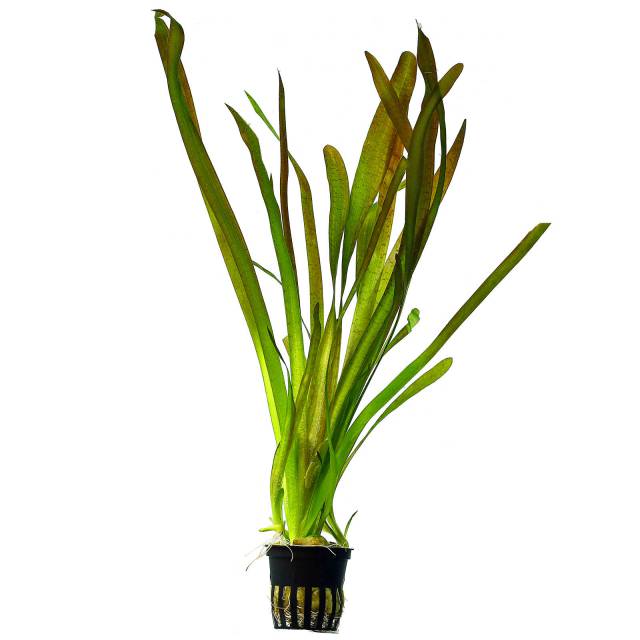
The fast-growing plants of the genus Vallisneria can be used in a cichlid tank as well. Vallisneria are typical background plants, which are planted into the substrate. Their leaves are robust, but not as hard as e.g. those of Anubias. They have found another way to compensate for predation: quick growth. In the appropriate nutrient conditions (e.g. targeted substrate fertilization) Vallisneria propagate very well by runners.
Echinodorus
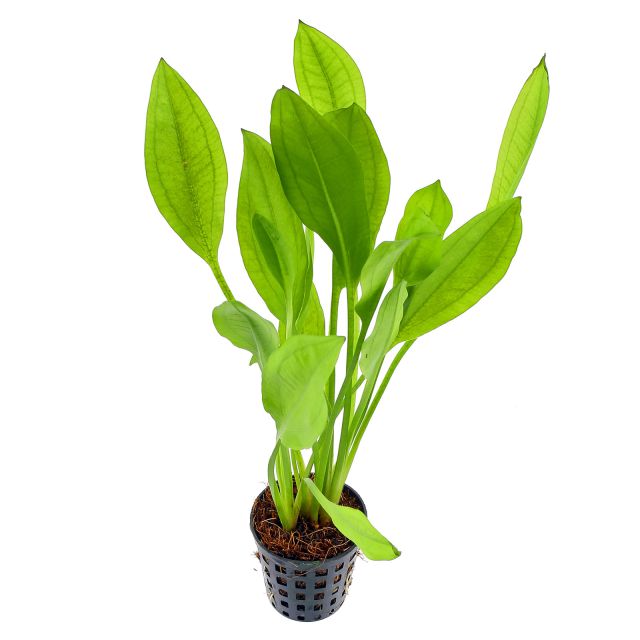
Broadleaved Amazon Swordplants
are recommended mainly for South American and Discus tanks. Nevertheless, they are - within certain limits - suitable for an aquarium with other cichlids, too. This rosette plant is mainly a root feeder and needs lots of nutrients. It should be well provided with those via the substrate, for which a targeted substrate fertilization is advised. In order to protect the plants against floating up in the beginning and to anchor them firmly in the ground, you can weigh the plant pot with small stones or gravel and bury it well in the substrate. If you do not want to use the pot and especially the rock wool inside in your aquarium, simply lay stones around the base of the plant after planting. With time and in appropriate nutritional circumstances, sword plants develop a dense root system. These plants are a little softer than Anubias, with the exception of the somewhat harder stems.
Cryptocorynes
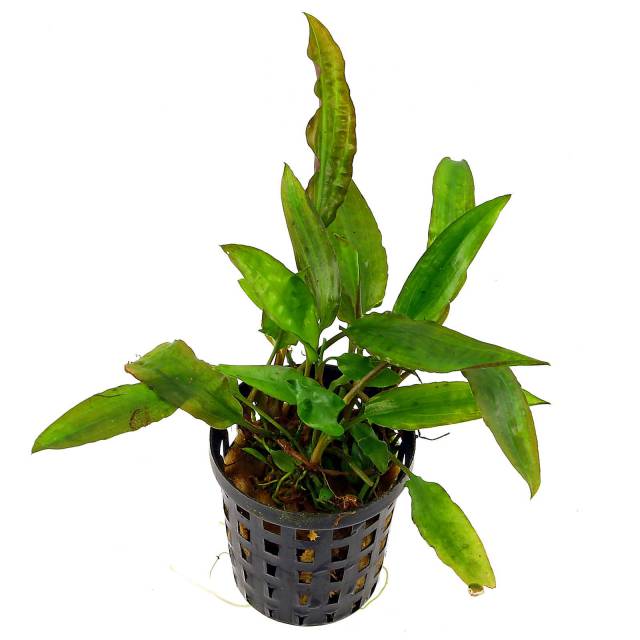
Large water trumpets such as Cryptocoryne usteriana are also classifiable as cichlid-proof. The giant water trumpet is undemanding and tolerates harder, alkaline water pretty well. These water parameters are also favored by the East African cichlids from Lake Malawi and Lake Tanganyika. Just like Echinodorus, Cryptocorynes are mainly root feeders and should ideally be fed via a substrate enriched with nutrients.